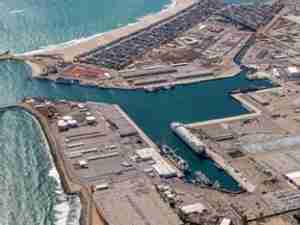New Indonesian terminal set to transform south-east Asian shipping
posted by AJOT | Apr 27 2017 at 09:35 AM | Ports & Terminals
Singapore - Indonesia is poised to finally take a premier position on global trade flows following the recent opening of the New Priok container terminal in Jakarta last August, delegates at the TOC Asia Container Supply Chain event in Singapore heard this week.
David Wignall, senior vice president at Indonesia Ports Corporation, explained that prior to the construction of the new terminal in the Indonesian capital’s Tanjung Priok port complex, the largest vessel the port could handle was 3,500-4,000 teu.
“New Priok can handle vessels up to 18,000 teu, and this produces a major transformation of logistics in Indonesia and potentially south-east Asia.
“As well as improving the port and cargo handling facilities, the project has turned the Indonesian Port Company into a genuine port developer,” he said.
The first phase of New Priok has capacity for 1.5m teu, and a further 7m teu will be added in future phases. This is on top of Tanjung Priok’s existing 4m teu capacity.
“That means that Tanjung Pirok will become a key hub for the region and I think it could potentially change the face of shipping in south-east Asia.
“What has been holding Indonesia back is the lack of capacity to handle the biggest, or even big, ships.
“But the ability to handle ULCVs starts now,” he said.
As a result of this new handling capacity, the port won its first direct transpacific call with the launch of the Ocean Alliance’s Pacific South West service that also calls at Singapore, Cai Mep, Hong Kong, Oakland and Los Angeles.
As The Loadstar reported yesterday, transhipment patterns in south-east Asia could be very different in the future, and Mr Wignall suggested that with the ongoing expansion more carriers and larger ships will be drawn by the large potential origin and destination volumes.
“The large transhipment volumes of the Malacca Straits are something of an illusion. The origin and destination cargo in Tanjung Priok is around 6m teu, and as we go eastwards across this vast country it is easy to add another 4-5m teu of cargo.
“There’s around 20m people on the eastern side of the Malacca Straits, compared to 50m in Sumatra and 120m in Java. As we go further east the number of people falls but the raw resources such as minerals increase.
“The future is south of Singapore,” he added.
Mr Wignall also explained that New Pirok will act as a gateway hub for the new terminals Indonesia Port Company is planning to build in the east of the country.
“Indonesian domestic shipping is costly and complicated, which is why president Jokowi is so keen to develop a maritime strategy.
“Now that we have developed a major hub that acts as a gateway to the world we need to develop regional ports to support this hub.”











